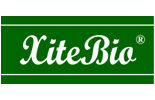With harvesting underway and predictions starting to roll in, it’s a great time to begin planning for 2026. In this week’s Growing Possibilities, we explore how harvest numbers are shaping up this season and what can be done to prepare for next spring.
Projections show increased harvest volumes for canola, corn, oats, and lentils, while wheat, soybeans, and barley are expected to decline compared to last year. Across the Prairies, crop conditions have varied widely. Low precipitation and extended heat in some regions have led to below-average performance (1).
Ag-biologicals could be a game-changer for your oilseed, cereal, or legume strategy, especially if you’re aiming to boost yield potential while navigating tighter margins and unpredictable weather. Inoculated canola tends to perform better under drought or low-fertility conditions, which is significant given the erratic rainfall patterns forecasted for 2025–2026. Studies have shown a 4–15% yield increase when using bacterial inoculants (2).
Pairing soybean crops with an inoculant is also an excellent way to boost yield, improve root development, and increase resistance to stress. Enhanced soil fertility and long-term crop resilience are additional benefits. This is particularly important for farmers in Northern and Central Canada, where microbial populations are limited due to cold climates and tillage history (3).
Pulse crops like peas, lentils, chickpeas, and faba beans form symbiotic relationships with Rhizobium bacteria, allowing them to fix nitrogen. These bacteria are present in inoculants designed specifically for pulses. Once introduced, inoculants improve root nodulation, which boosts nutrient uptake, plant vigor, and long-term soil fertility (4).
The ideal 2026 strategy starts with pairing an inoculant with soil where phosphate is present but inaccessible to plants. With tariffs looming, boosting domestic yields through inoculants could be a smart hedge. Regardless of crop type, an inoculant or ag-biological is an essential part of the toolbox for increasing yield, combating stress, and developing long-term soil health.
At XiteBio Technologies, we offer several innovative solutions tailored to different crop types. Our Plant Growth Promoting Rhizobacteria (PGPR) technology focuses on phosphorus solubilization. For oilseeds, cereals, and legumes, XiteBio® Yield+ is the go-to product, also supporting iron chelation and phytohormone production.
For tuber crops, we offer XiteBio® Tuber+, and for vegetable crops, XiteBio® Vegi+. Both designed to enhance phosphorus availability specific to each crop type.
For peas, lentils, faba beans, and soybeans, our Advanced Growth Promoting Technology (AGPT) product, XiteBio® PulseRhizo®, delivers nitrogen fixation, improved plant vigor, and higher yields. Our other AGPT product, XiteBio® SoyRhizo®, provides the same benefits specifically for soybeans. We also offer a dual-action solution, XiteBio® OptiPlus®, which combines both AGPT® and PGPR technologies to support optimal soybean performance.
As harvest results roll in, it’s never too early to start planning for next year. An XiteBio product could be the missing link to Healthier Plants and Better Yields. For more information, contact one of our sales agronomists at xitebio.com or call 1-855-XITEBIO (948-3246).
References
- https://m.farms.com/ag-industry-news/2025-canadian-farming-outlook-reveals-mixed-results-902.aspx
- https://harvest.usask.ca/server/api/core/bitstreams/980957e1-2593-4bf9-9f61-5f1bcd800387/content
- https://www.osciaresearch.org/current-projects/agtiv-mycorrhizal-inoculant-evaluation-potato-cereal-soybean-crops/
- https://saskpulse.com/resources/inoculant-options-for-pulse-crops/


